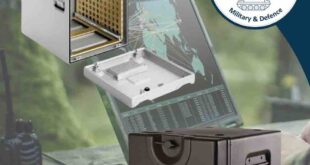Harry Makrygiannis explains how this complex production method is managed from a steering system supplier’s perspective
The military vehicle industry relies on concurrent design of all critical components, from specialist military-grade manufacturers.
While multiple organisations optimise their own contributions simultaneously however, confidentiality must be maintained throughout the supply chain.
From a productivity standpoint, concurrent design is a no-brainer. Spending additional time developing and testing new products comes at a great expenditure, whereas parallelising the design and manufacturing process allows products to be completed much more quickly.
In theory, this method is ideal for supplying low-risk vehicle components, like sun visors or wing mirrors. The story is completely different when you are responsible for a safety-critical aspect of the vehicle, such as the steering system.
Steering systems for military vehicles must be equipped to deal with a wide range of climates and conditions.
Difficult terrains, deep wading and searing temperatures are just some of the challenges these systems will face during service.
Simultaneous engineering and concurrent design of military steering systems has clear advantages. It allows a multi-disciplinary collaboration between the manufacturers of other parts.
For instance, engineers can clearly envision how changes to the steering systems design could impact other elements of the vehicle’s suspension and ensure the end product is manufactured correct.
This means that issues can be identified and rectified before a vehicle starts being physically built.
Needless to say, getting it right the first time, every time, is of the utmost importance.
However, concurrent design is not without its risks. Ever wondered why so many brand-new vehicles are recalled? Often, this is due to tight deadlines and reduced time-to-market expectations.
Whether the recall is due to an attempt to reduce the cost for consumers, or an error in engineering – for military vehicles, running the risk of a recalls is out of the question.
When dealing with military customers, there are also a lot of pressures to face in terms of data security from the original equipment manufacturer (OEM). It’s rare to hear news about innovations from the military sector, and there’s good reason for it.
Information security is one of the most important aspects of today’s military operations — and the design and engineering data of vehicle for warfare is among the most sensitive information.
A balance must be struck to enable the advantages of concurrent design in this sector, without compromising on quality or exposing confidential vehicle data.
For suppliers to the sector, care must be taken to what kind of data is shared, and the method used to do so.
By nature, we can’t disclose the exact methods of protecting this confidential data. However, we do recommend that OEMs work exclusively with experienced military parts suppliers.
For instance, Pailton Engineering has been supplying specialist military steering systems for over two decades and in that time, has developed long standing relationships with military manufacturers.
Harry Makrygiannis is wiith steering system manufacturer Pailton Engineering.
 Engineer News Network The ultimate online news and information resource for today’s engineer
Engineer News Network The ultimate online news and information resource for today’s engineer





